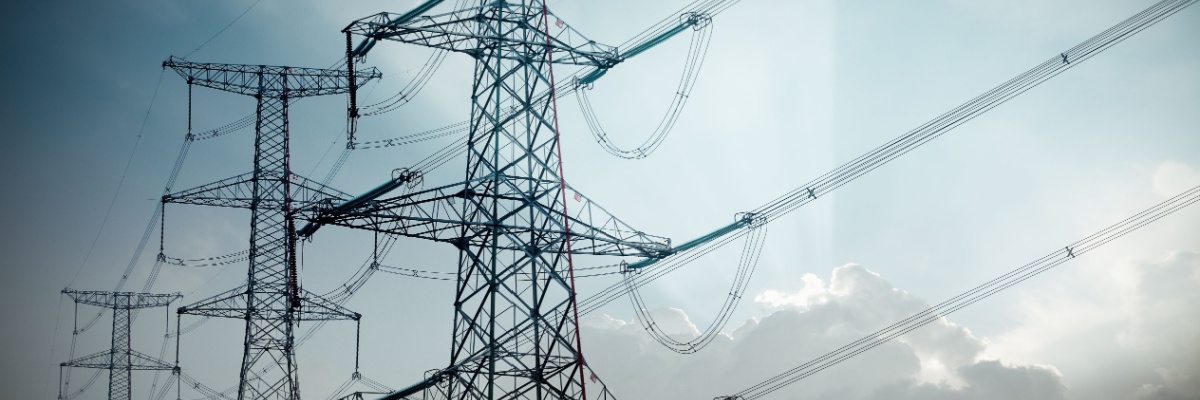Australia’s biggest three energy retailers – Origin, AGL and EnergyAustralia – have each confirmed their electricity prices are rising from 1 July, with hikes of up to 13.5% to hit households.
The retailers, which combined have a share of more than 60% of the electricity market, have cited higher wholesale, network and retail costs as the reason behind the increase to their variable market plans.
← Mobile/tablet users, scroll sideways to view full table →
| Price changes from big three energy retailers | |||
|---|---|---|---|
| Origin | AGL | EnergyAustralia | |
| NSW | +9.1% | +13.5% | +8.7% |
| VIC | TBC | +6.8% | +2.3% |
| QLD | +3.1% | +7.5% | +2.1% |
| SA | +5.5% | +7.8% | +2.9% |
| ACT | +10.3% | N/A | +11.6% |
Note: Origin changes are weighted average electricity price changes based on average annual consumption profile across all tariff types. AGL changes reflect residential and small business customers combined. See table below for effective dates.
The announcements follow changes to the new default plan prices approved by the regulators, set to take effect on Tuesday, 1 July, with increases across almost all networks, in some cases, by over 9%.
The default prices act as a cap for customers who don’t, or can’t, change their energy plans, as well as a benchmark for pricing for market plans, however the vast majority of customers are on a market plan.
Note: Western Australia, north Queensland and the Northern Territory are operated independently from the national energy market.
What energy price changes mean for the average household bill?
The actual price paid by households will differ based on the cost of their current plan, their consumption from the grid and whether they generate solar power that feeds back to the grid.
Canstar Blue research estimates that the average household with one of the big three providers will see an annual increase of between $31 and $261, depending on location and provider.
This is based on the average-priced plans from each provider on the Canstar Blue database.
When are electricity prices changing?
While the default market prices start on Tuesday, the price hikes by electricity retailers to their market plans will happen at different times across the states.
← Mobile/tablet users, scroll sideways to view full table →
| Timing of price changes – Origin, AGL, EnergyAustralia | |||
|---|---|---|---|
| 1 July | 1 August | 1 September | |
| Origin | NSW, QLD, SA | VIC, ACT | |
| AGL | NSW, QLD, SA | VIC | |
| EnergyAustralia | NSW, VIC, ACT | QLD, SA | |
What should customers do?
- Step 1 – Call up your current provider and ask to get on the cheapest plan available. This is peak switching season and the energy companies are in the mood to make a bargain.
- Step 2 – Compare prices. While some people will want to wait until all providers have changed their prices, avid switchers can compare today with the view to re-checking their rate in spring.
- Step 3 – Switch. Once you’ve selected your new provider, all you typically need to do is fill out an online form, including a few details such as your license number and expiry date, and your new provider will do the rest for you. If you do switch, make sure you ask your new retailer whether the price has already been increased or is still to come.
- Step 4 – Compare again in summer. Electricity prices can and do change regularly. While there are plans to limit price hikes to once a year, this doesn’t come into effect for most states until next July.
Compare electricity prices
Here are some of the cheapest published deals from the retailers on our database that include a link to the retailer’s website for further details. These are products from referral partners†. These costs are based on the Ausgrid network in Sydney but prices may vary depending on your circumstances. This comparison assumes general energy usage of 3900kWh/year for a residential customer on a single rate tariff. Please use our comparison tool for a specific comparison in your area. Our database may not cover all deals in your area. As always, check all details of any plan directly with the retailer before making a purchase decision. Here are some of the cheapest published deals from the retailers on our database that include a link to the retailer’s website for further details. These are products from referral partners†. These costs are based on the Citipower network in Melbourne but prices may vary depending on your circumstances. This comparison assumes general energy usage of 4000kWh/year for a residential customer on a single rate tariff. Please use our comparison tool for a specific comparison in your area. Our database may not cover all deals in your area. As always, check all details of any plan directly with the retailer before making a purchase decision. Here are some of the cheapest published deals from the retailers on our database that include a link to the retailer’s website for further details. These are products from referral partners†. These costs are based on the Energex network in Brisbane but prices may vary depending on your circumstances. This comparison assumes general energy usage of 4600kWh/year for a residential customer on a single rate tariff. Please use our comparison tool for a specific comparison in your area. Our database may not cover all deals in your area. As always, check all details of any plan directly with the retailer before making a purchase decision. Here are some of the cheapest published deals from the retailers on our database that include a link to the retailer’s website for further details. These are products from referral partners†. These costs are based on the SA Power network in Adelaide but prices may vary depending on your circumstances. This comparison assumes general energy usage of 4000kWh/year for a residential customer on a single rate tariff. Please use our comparison tool for a specific comparison in your area. Our database may not cover all deals in your area. As always, check all details of any plan directly with the retailer before making a purchase decision.
Canstar Blue’s data insights director, Sally Tindall, says, “The price increases from Australia’s biggest energy retailers is not the Christmas in July message we were all hoping for – particularly now so many Australians are in the throes of a cold, wet winter.”
“For the average household, they’re looking at price hikes of between $31 and $261 a year, however, for bigger families, they could well be looking at hikes that are double this.
“The extension of the government’s electricity rebate will take some of the sting out of these price hikes through to December, however, this could lead to even bigger bill shock in the new year unless people take action.
“The electricity price hikes are not limited to the big three – we expect the majority of providers will be hiking their energy rates over the next couple of months on the back of increased network, wholesale and admin costs.
“If you get a note from your provider letting you know prices are on the rise, take a look at what your new rates are in relation to the reference price, but also check what date these new rates take effect.
“While EnergyAustralia’s announced increases are, in many cases, smaller than Origin and AGL’s, what ultimately matters is the price you’re paying, so make sure you compare your plan against the rest of the pack, not just once, but at least twice a year.
“The market is going to be in a state of flux over the next couple of months. Yes, you can wait until the dust settles before making the move to compare, or, if you’re serious about saving, cast aside the waiting game and get yourself a better energy deal now. You can always compare again later.
“Whether you switched energy plans last year or last decade, you can and should be getting out there to get yourself a better deal.”
← Mobile/tablet users, scroll sideways to view full table →
| Current lowest cost plans – big three retailers | |||
|---|---|---|---|
| Origin | AGL | Energy Australia | |
| Sydney | $1,539 | $1,592 | $1,485 |
| Melbourne | $1,282 | $1,260 | $1,282 |
| Brisbane | $1,860 | $1,859 | $1,860 |
| Adelaide | $2,007 | $2,074 | $2,074 |
| Canberra | $1,848 | N/A | $2,271 |
Source: Canstar blue – 26/06/2025. Based on single-rate, market offer electricity plans on the Canstar Blue database; excluding solar-only plans. Average annual costs calculated based on the estimated lowest possible price a representative customer would be charged in a year, assuming all conditions of discounts offered (if any) have been met. Representative customer based on the reference usage for NSW, VIC, QLD, ACT, and SA (per Victorian Default Offer for VIC, ICRC for ACT and AER for others) or the median usage in the Office of the Tasmania Regulator’s report, Typical Electricity Customers in Tasmania 2022 for TAS.
Image Source: chuyuss/Shutterstock.com



Share this article